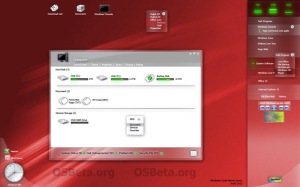Microsoft has dropped two strong hints in the past two days that the next version of its Windows operating system will arrive in 2009, shaving up to a year off previous expectations.
It could also be a signal that Microsoft intends to cut its losses with Windows Vista, which has been poorly received or shunned by customers, especially large companies.
Microsoft has long said it wants to release Windows 7 about three years after Vista, which was released to manufacturing in November 2006 but not officially launched to consumers until January 2007. Given Microsoft’s recent track record – Vista arrived more than five years after XP – most outsiders had pegged some time in 2010 as a safe bet for Windows 7’s arrival.
But News.com reported on Friday that Microsoft chairman Bill Gates answered a question at a business meeting in Miami about Windows Vista by saying “sometime in the next year or so we will have a new version”.
And during its announcement on Thursday that it would extend the availability of Windows XP Home for low-cost laptops. Microsoft said it would retire the operating system only after June 30, 2010, or one year after the release of Windows 7, whichever comes later.
That implies that Microsoft is targeting the middle of next year for some sort of release milestone for Windows 7 – the only codename known at the moment – although whether that would be a final release to consumers or an RTM, which allows businesses and OEMs to start installing it, is unknown.
A Microsoft spokeswoman told Computerworld US the company “is in the planning stages for Windows 7 and development is scoped to three years from Windows Vista Consumer GA”. She said the company was providing early builds of the new operating system to gain user feedback, but otherwise was not providing further information.
Gates also said that he was “super-enthused about what [Windows 7] will do in lots of ways” but didn’t elaborate.
What could those be? Microsoft has divulged a few things. Responding to criticism that Windows has become unnecessarily bloated, the company has 200 engineers developing a slimmed-down kernel called MinWin that uses 100 files and 25MB, compared to Vista’s 5,000 files and 4GB core and is so small it lacks a graphical sub-system.
Microsoft has also confirmed that the operating system will come in consumer and business versions and in 32bit and 64bit editions.
Screenshots of early betas of Windows 7 build 6519 of Windows 7 released in December

Give your comments please

Give your comments please

Give your comments please

Give your comments please

Give your comments please
For more pics click here : Windows 7
Microsoft needs to start generating excitement about its software months or years in advance in order to prepare its millions of reselling partners.
But if it talks up Windows 7 too much, it runs the risk that large companies – Microsoft’s most profitable customer segment – will hold on to their Windows XP machines and skip Vista entirely in favour of Windows 7.
That appears to be happening. A recent enterprise survey by Forrester Research showed that only 6.3 percent of enterprises were running Vista at the end of December, with most of the upgrades coming at the expense of aging machines running Windows 2000, not XP.
The vast majority of the 100 million copies of Vista that Microsoft has sold so far have gone to individuals and small businesses purchasing new PCs.
The least-loved version of Windows has long been Windows Millennium Edition (ME), a buggy minor upgrade that was superseded by XP within a year of its release. Despite its far greater – some would say, too great – technical ambition, Vista may end up lumped together with ME as one of the blips on Windows’ long-term roadmap.







 LG has begun teasing the upcoming launch of the third cell phone in its style-focused “Black Label” family of handsets.
LG has begun teasing the upcoming launch of the third cell phone in its style-focused “Black Label” family of handsets.